A nightgown is a necessary wardrobe item. The main condition is that it is comfortable, does not restrict movement and does not cause allergies. You can sew the product yourself and decorate it to your taste. To do this, you need a nightgown pattern so that the finished item fits your figure perfectly.
- Selecting fabric and taking measurements
- How much fabric do you need?
- How to make a pattern
- Model with straps according to individual pattern
- With one-piece sleeves
- Pattern of a nightgown with straps
- On the yoke
- With lace
- For girls
- Simple model with adjustable straps
- Technology
- Building the back
- Joining shoulder and side seams, sewing in sleeves
- Technology of making a linen seam
- Turn-down collar processing
Selecting fabric and taking measurements
The fabric for a nightgown should be light and breathable, since this is not sewing outerwear from thick fabric. In this case, it is worth giving preference to natural silk, but if it is too expensive, then you can choose cotton, calico, guipure or satin. These fabrics are more pleasant to the body and do not cause a feeling of discomfort during sleep. Therefore, they will be an ideal material for sewing a nightgown or shirt.
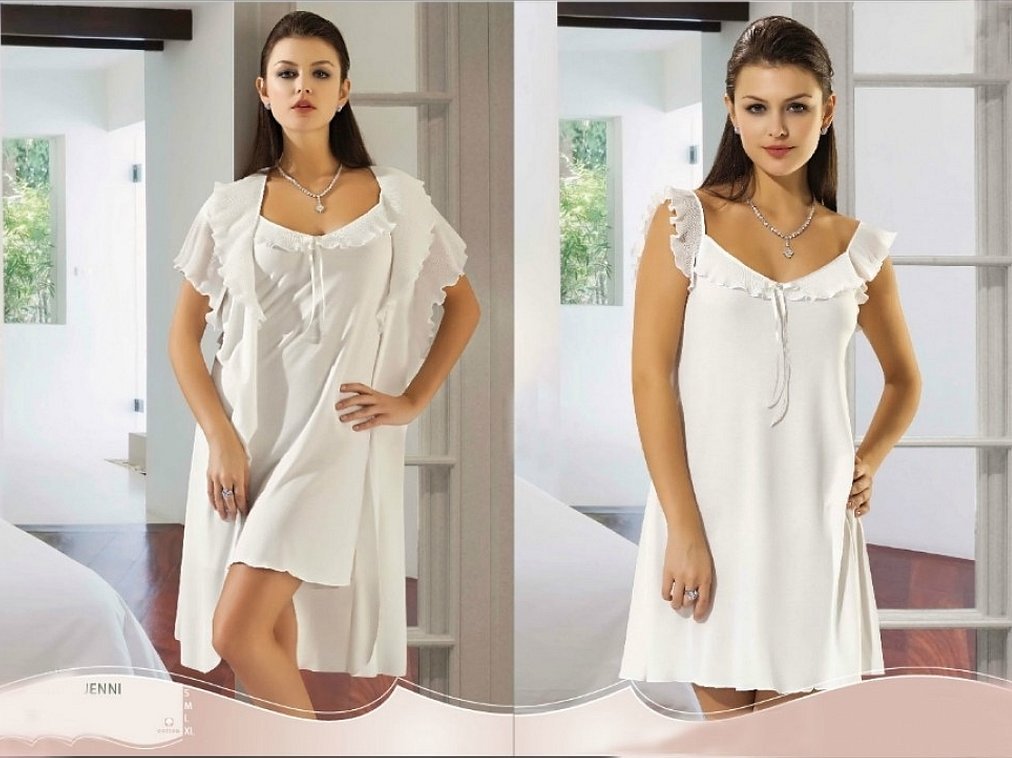
Measurements are taken with a centimeter and written down in order to determine the size of the product. Different sizes and models require a different number of measurements, but there are basic ones without which it is impossible to sew a nightgown for a certain clothing size. To sew a nightgown, you need to know the basic list of measurements:
- POG - chest semicircle;
- Dst - length from back to waist;
- Op - shoulder girth;
- POSH - semi-circumference of the neck;
- Di is the length of the product.
Once these measurements have been taken, you can begin constructing the pattern and the process of sewing the nightgown.
Please note! The shirt should not be tight to the body, so you need to add a few centimeters to the measurements and don’t forget about the seams.

How much fabric do you need?
Before sewing a nightgown, you need to decide on the fabric and its quantity. It depends on the measurements taken and the size of the product. This is important, since a larger size of the product will require much more fabric than a small size. Therefore, it is worth taking careful measurements and, based on this, calculating the required footage of the fabric needed for sewing.
For example, if the length of the widest part of the chest or hips is 100 cm, then you need to take 2 lengths, namely 2 meters of fabric. The length of the product itself from the cervical vertebra to the bottom of the nightgown is also taken into account. So if the length is 90 cm, and the width of the skein of fabric is 140 cm, then you need to ask to cut a piece of fabric 140 × 200 cm.
Also, after choosing the fabric, a separate piece should be washed to understand how much the fabric will shrink during repeated washing. This is necessary in order to understand how much the size of the future product will decrease after the first and subsequent washings. After this, you should double-check all calculations and measurements.
How to make a pattern
How to sew a nightgown with your own hands? A pattern for a nightgown is made independently taking into account previously taken measurements and the model of the nightgown. It is important to note whether it will be fitted or loose-fitting. There are several common models of nightgowns.

Model with straps according to individual pattern
The peculiarity of this model is the presence of straps for wearing the product. That is, this model is built like an elongated T-shirt. It can be of any length, everything depends on the preferences for the model. An individual pattern of a nightgown on straps is built for each person individually. After taking measurements, they are taken into account in the construction of the pattern. It is very important, for example, to correctly measure the length of the straps themselves so that they are not too long or short. After this, such questions as how to sew a nightgown should not arise.
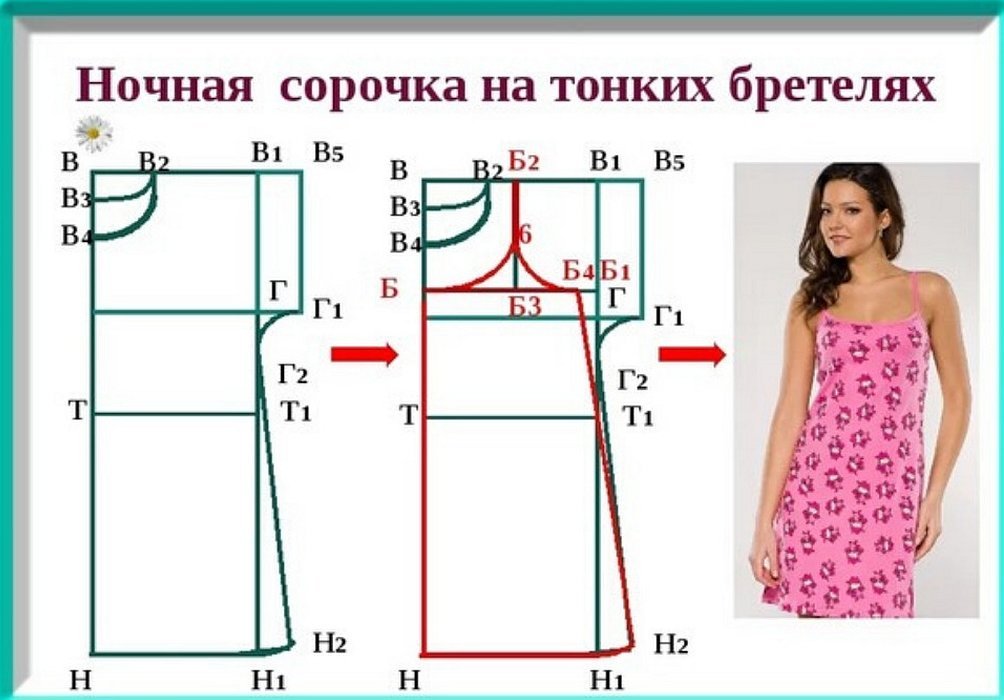
With one-piece sleeves
A nightgown with such a sleeve is cut out together with the base of the shirt without additional seams to connect these parts. That is, the sleeve is not made as a separate pattern. This is a fairly simple pattern for a nightgown. To make it, you only need to sew 2 parts together and process the edges. You can make a pattern on paper, or you can immediately draw an approximate sketch of the product with chalk directly on the fabric. Thus, for this you will only need scissors, fabric, measurements taken for the pattern and sewing of the product, threads and pins.

Pattern of a nightgown with straps
The pattern is made based on the measurements taken:
- You need to measure the length of the item, the hips and chest. These measurements are needed so that the shirt fits well and does not restrict movement during sleep.
- The front and back parts of the shirt are cut out and then sewn together.
- If necessary, darts are made at chest level. If the nightgown has straps, they are cut out separately and then sewn to the base of the nightgown. This is done quickly and easily.
- At the very end, the edge of the product, the neckline and armhole are processed.
On the yoke
This type of nightgown is sewn on the basis of a yoke. The yoke is the upper part of the nightgown that is held on the model's shoulders. The product usually begins with the yoke and ends with overcasting and attaching decorative elements and securing buttons if necessary. The yoke pattern is made as follows: approximately 13 cm is set aside along the center line of the back and along the shoulder cut line. This is the width of the yoke. And the line of the lower cut of the yoke is drawn parallel to the sprout that starts from the neck. Thus, having finished with the yoke, all other details are cut out according to the usual pattern. How to make a standard pattern of a nightgown should be seen above.
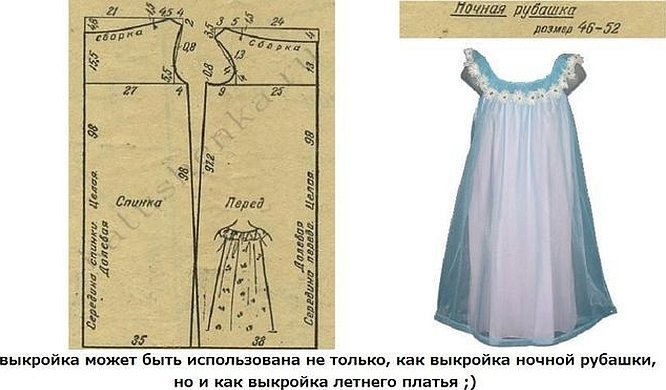
With lace
This model uses a specific material for its sewing and lace edging. Batiste is quite pleasant to the body, and it is also easy to sew nightgowns of any type from it. Easy to cut batiste differs from most ordinary cotton fabrics of average price. This material is highly valued for its quality, and things made from it are good for long-term wear. Ribbons and lace edging of the edges of the nightgown are used for decoration. This allows you to give the product a luxurious, finished look and a special design and color scheme. Thus, such nightgowns, sewn from batiste using lace ribbons, are in mass demand.
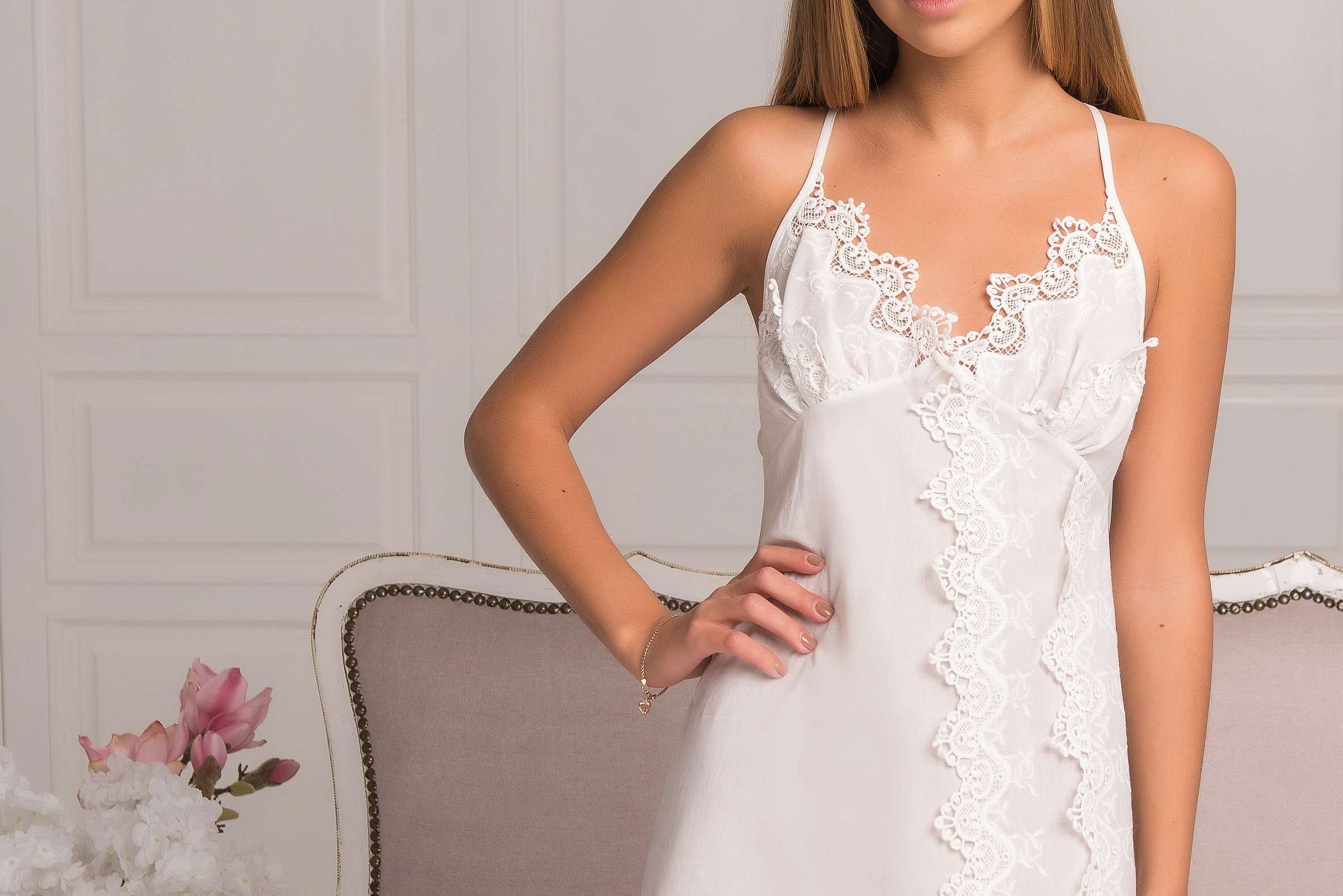
For girls
For girls, nightgowns are sewn in small sizes. Sizes are usually not named with letters, they are designated by the child's age, for example, 10-12 years. They differ from adult ones in the simplicity of the cut, that is, without deep cuts for the neckline and soft pink shades. Children's nightgowns are immediately visible, they have children's drawings on the front or colored prints on the entire product.
If you want to sew a shirt for your child yourself, you can take a regular women's pattern. If you have patterns for nightgowns, but the size is large, you can simply reduce it by removing the required number of centimeters from each edge.
Simple model with adjustable straps
This nightgown is made as a regular long T-shirt, to which straps are separately sewn with the possibility of adjustment as on women's underwear, namely bras. About nightgowns on straps was written above in a separate point for this.
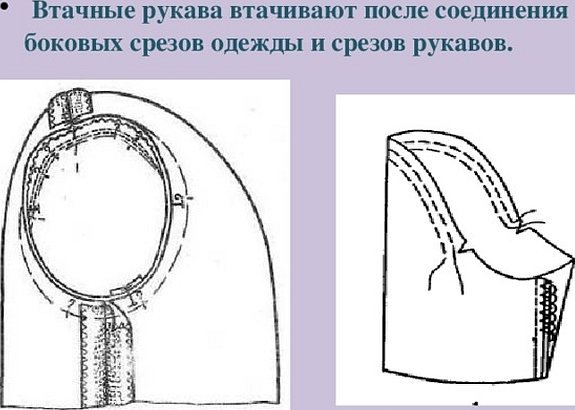
Technology
It is necessary to prepare all the necessary things to create a high-quality pattern, so that you do not have to redo it several times due to gross errors. For this, the following products and materials are required:
- fabric for sewing (this can be silk, jersey, cotton, chintz, linen or other natural materials; it is not recommended to use synthetics for underwear);
- scissors, tracing paper or pattern paper;
- chalk, sewing machine, thread of the desired color to match the fabric;
- ruler and tape measure, pins.
Much depends on the sewing technology of the product, for example, its quality of execution, wearing comfort and other important details. If the model is sewn individually, then the technology has its own subtleties. It is necessary to sew the shoulder seams and make overcasting. After that, a control fitting of the product is done, and if there are no defects, then the product is finished.
Building the back
The back neck is not as wide as the front. Therefore, approximately 1 cm is set aside for this. Next, a regular rectangle with an armhole for the sleeves is constructed. If necessary, a shoulder line is also constructed for further sewing in of the sleeves.
Joining shoulder and side seams, sewing in sleeves
In order to sew a nightgown with long sleeves, it is necessary to grind the shoulder cuts of the front and back and begin sewing in the sleeve gradually. The seam allowances are ironed and overcast in advance. You should start from the top point of the sleeve cap. 10 cm are marked to the left and right in each direction. These should be equal segments so that the sleeve is even and not crooked. The cap is tried on to the armhole for the sleeve, if everything matches, then it is sewn in at the 10 cm marks. All this is done with one continuous line. The bottom of the sleeves is swept with a hem and stitched.

Technology of making a linen seam
This type of seam is made on a sewing machine. It is made for connecting seams, which are particularly strong compared to others. They were called linen seams for one simple reason - they are used when sewing items that are often washed. Such linen seams are used on a soldier's shirt, duvet cover, sheets and pillowcases. There are lapped and double seams. They differ only in that the double seam is neater compared to the lapped seam. It is used in sewing bed linen or home textiles.
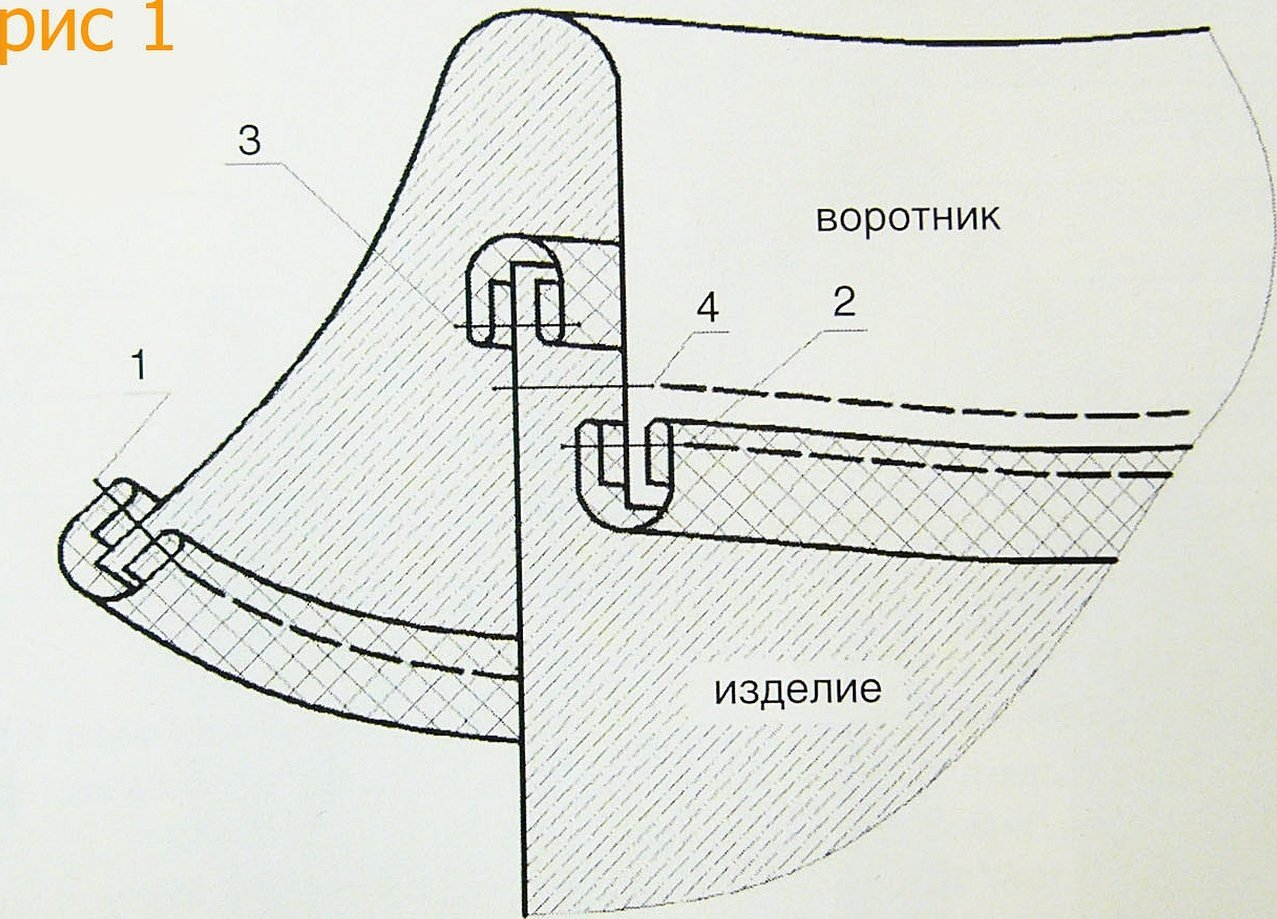
Turn-down collar processing
The collar, cut separately from the main product, also needs to be processed. For this, the upper part of the collar must be duplicated without fail. And the lower collar should be slightly smaller than the upper one at the ends. Both collars are pinned together. Then the facing of both collars together begins. At the end, the collar is turned inside out and a piping is formed. It is ironed, and we sew a machine line along the ends of the collar.
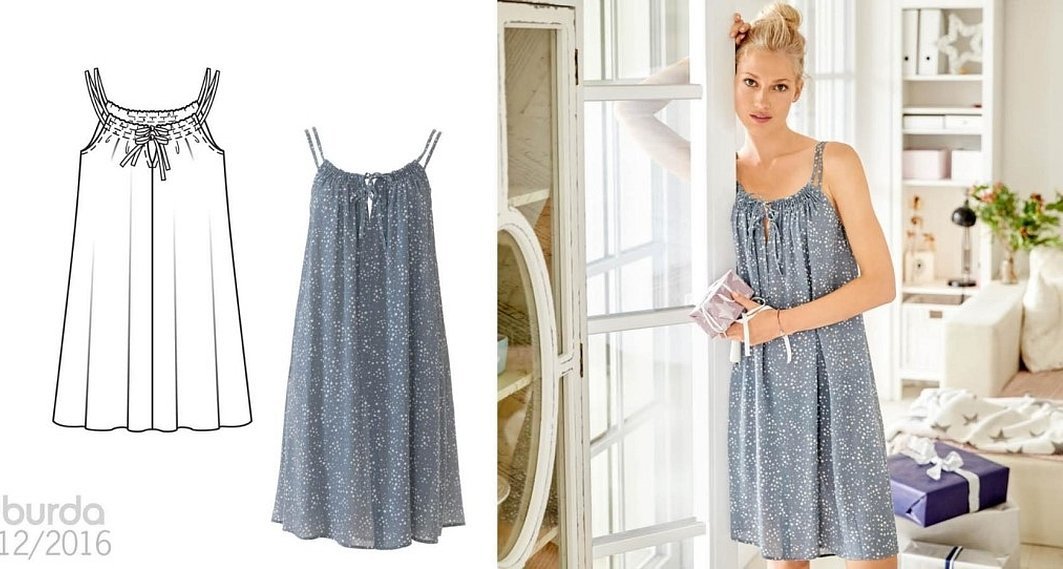
All the main details for sewing a quality nightgown or shirt, necessary in this process, are reflected in this article. If any questions remain, then there is enough information on the Internet to find answers to any question that arises.




